|
|
First published in the “Gefiederten Welt” and NFSS

Digital bird-photography – is the switch to digital worth it?
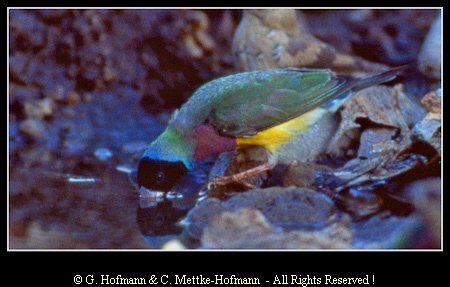
There were only few things which changed life of common people as dramatically as the invention of the PC/Mac. First only a tool for professionals and office people they are now common in most houses. Internet is no longer the medium for scientists but is the source for information and entertainment for millions of people. Long gone is the LP pushed aside by the more convenient CD which  meanwhile is yesterday itself - MP3 has been its killer. There was one thing in life which didn’t change as fast; the good old film was still around when music jumped already on the digital train. Okay, there were a couple of journalists who had already switched to digital but the cameras were horribly expensive and the results could in no way compete with film but and this is the big but in the news business they were fast. They shot the picture and just a couple of minutes later it could be distributed all over the world - time is money in the news business. And even the professionals liked what made already Polaroid a success you could see the result immediately. The technical evolution was on its way. The first point and shoot cameras despite being expensive and having a low resolution were already fascinating cameras and opened the window to the future of photography. From this time on the digital train was on its way and there was no way that it would not leave the film- train behind. meanwhile is yesterday itself - MP3 has been its killer. There was one thing in life which didn’t change as fast; the good old film was still around when music jumped already on the digital train. Okay, there were a couple of journalists who had already switched to digital but the cameras were horribly expensive and the results could in no way compete with film but and this is the big but in the news business they were fast. They shot the picture and just a couple of minutes later it could be distributed all over the world - time is money in the news business. And even the professionals liked what made already Polaroid a success you could see the result immediately. The technical evolution was on its way. The first point and shoot cameras despite being expensive and having a low resolution were already fascinating cameras and opened the window to the future of photography. From this time on the digital train was on its way and there was no way that it would not leave the film- train behind.
Nowadays film looks like an ancient relict, digital is actually so successful that the big players like Nikon no longer develop new camera-bodies for film, some already stopped their production. The companies which didn’t jump on the digital train fast enough are history and got kicked out of the market.
Believing the advertisements shown in fancy magazines on glossy paper one could think paradise for photographers is already reality. We no longer have to care about wasted film you don’t like the shot – just delete it and try again. No waste of money any more. The cameras of course are perfect tools, autofocus (Af) is lightning fast, under-or overexposures are virtually impossible, and of course the colors perfectly match reality. Do you believe it; I guess you don’t and so do I? There is no free lunch not even in the digital world.
The cameras and accessories are still pretty expensive and new models pop up every month. What to choose point & shoot or SLR? How many megapixels? What about digiscoping? Which accessories are necessary? In case of an SLR can I still use my old lenses? Do I really need a PC? Choices, choices – welcome to the land of digital photography.
Let’s try to answer at least the most important questions.
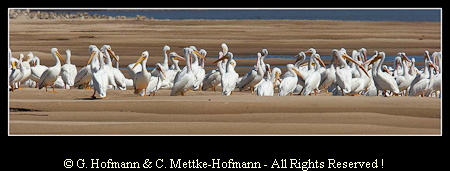
In the old days it was easy for a wildlife photographer to decide between getting a SLR or a point & shoot. There was simply no point & shoot camera which was suitable for our needs the focal length of all of them was way too short. It seems time has changed things, but honestly if you don’t go the way of digiscoping it didn’t change that much. Despite the enormous zoom range of the modern compact-cameras the SLR is still the best tool for bird photography. The zoom range of the small cameras looks promising but and this is a big but the AF is not even close to a SLR. The other snag is the bad performance at high sensitivities (ISO). With an SLR it is no problem to shoot at 800 ISO, with a megazoom compact-camera 100 ISO is about as high as you want to go for decent quality. With very few compact cameras 200 ISO looks still not bad but loss of detail is pretty obvious, whereas the 800 ISO or even 1600 ISO with the newest generation of SLR is good enough for a cover page in a high end magazine. As another snag of point & shoot cameras there is still the shutter delay; it is no longer as bad as in the early times but still too long for most bird-photography. Due to the small sensor format compact-cameras have an enormous depth of field often a disadvantage for serious bird photography because it is nearly impossible to get a smooth and homogenous background and it is a killer for taking picture through the wire mesh in the zoo. In the latter case, you want a very shallow depth of field so that the wire mesh is invisible in the picture. Of course, decent results are possible with this small, all in one computers but they are harder to achieve and the usage is limited.
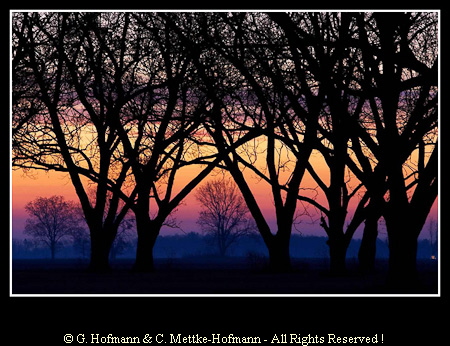
Okay, we go for an SLR but which one? How much of an SLR does a newbie need? Is only the latest professional camera with 12-21 MP good enough for the job or is entry-level SLR enough to do the job?
The question about the MP is easy to answer; all but very few SLRs meanwhile offer 8-10MP which is more than enough for what we want the camera to do. In fact it is probably even enough to be printed as a cover page on a renowned journal. If your pockets are deep enough you can, of course, go for a camera in the 12-16MP range which offers a bit higher resolution and more  possibilities to crop the image. possibilities to crop the image.
What else has to be considered? Currently, Canon and Nikon are the leader of the pack. Fuji (which is basically a Nikon camera using a Fuji sensor but Nikon lenses), Pentax/Samsung, Sony (former Minolta), Olympus and Newbie Panasonic offer all pretty good cameras for our needs. But it is no secret that Canon and Nikon are most popular among nature and bird photographers. The reasons are the systems behind the camera-body. With both companies you have the choice among all different lenses you can imagine and there is nearly no photographic problem which isn’t covered by their systems.
If you start from scratch always remember you don’t buy a camera you buy into a system.
A) Ask yourself which company offers the most choices in terms of suitable lenses?
B) Which camera fits my hands best?
C) Which company offers helpful features like image stabilization, fast AF with manual override?
D) Which company will still be in the market in the near future?
E) And of course if you own already a film-SLR the question is can I use the lenses I already have?
Just five questions but only Canon and Nikon will pass all five. No wonder we see them most among the top professionals all over the world.
Let’s look into the detail. They offer by far the most attractive line of lenses for bird photography, 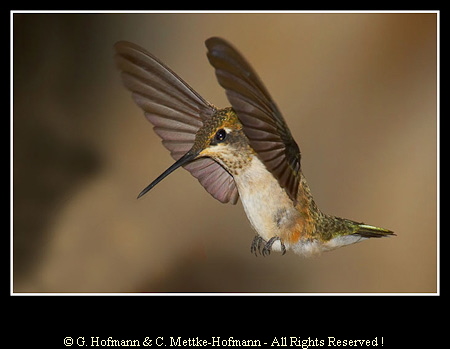 both companies offer 70/80-200mm lenses with image stabilizer/ vibration reduction (IS/VR), several 70/100mm – 300mm with IS/VR, 80/100mm-400mm also with IS, and they offer the big bazookas like 2,8/300mm or my favorite bird lens the 4,0/500mm and even 4.0/600mm lenses. Canon offers more lenses with IS than Nikon and their very fast and accurate ultrasonic AF allows manual override without fiddling for a tiny switch on the camera or lens. Nikon is trying to catch up but still has some lenses like 80-400mm without ultrasonic AF or some lenses like the 4.0/300mm without IS. Pentax, Sony and Olympus have much fewer choices although they meanwhile offer the IS feature in the camera body so that every lens attached becomes in principal an IS lens but it is a compromise and often doesn’t work as effectively as the IS technology in the lens. The big disadvantage they still don’t have the variety of different lenses for us bird nuts and if you want to start from scratch I would either go with Canon or Nikon. Things look different if one owns already a couple of lenses you still can use your Minolta-AF lenses on the new Sony bodies and you just have to buy the camera body to step into the digital world. The same is true for Pentax AF lenses. Olympus and Panasonic are both totally new systems; your old Olympus lenses won’t work on their bodies. both companies offer 70/80-200mm lenses with image stabilizer/ vibration reduction (IS/VR), several 70/100mm – 300mm with IS/VR, 80/100mm-400mm also with IS, and they offer the big bazookas like 2,8/300mm or my favorite bird lens the 4,0/500mm and even 4.0/600mm lenses. Canon offers more lenses with IS than Nikon and their very fast and accurate ultrasonic AF allows manual override without fiddling for a tiny switch on the camera or lens. Nikon is trying to catch up but still has some lenses like 80-400mm without ultrasonic AF or some lenses like the 4.0/300mm without IS. Pentax, Sony and Olympus have much fewer choices although they meanwhile offer the IS feature in the camera body so that every lens attached becomes in principal an IS lens but it is a compromise and often doesn’t work as effectively as the IS technology in the lens. The big disadvantage they still don’t have the variety of different lenses for us bird nuts and if you want to start from scratch I would either go with Canon or Nikon. Things look different if one owns already a couple of lenses you still can use your Minolta-AF lenses on the new Sony bodies and you just have to buy the camera body to step into the digital world. The same is true for Pentax AF lenses. Olympus and Panasonic are both totally new systems; your old Olympus lenses won’t work on their bodies.
Canon currently offers about seven camera bodies which suit our needs starting at $600 and for the deep pockets up to $7000. Three camera bodies, the EOS 5D and the EOS 1 D Marks IIs / IIIs are so called full frame bodies which means that the sensor in these cameras has the same size as the good old slide 24x36mm. The 1 D Mark II/ MarkIIn or the brand new 1D Mark III have smaller sensors called, APS-H size. They are smaller by the factor 1.3. The most popular Canon cameras, the EOS 20/30/40D and all the rebels like the XT or XSI are equipped with APS-C sensors which are 1.6 times smaller than the good old film. We will explain  later what is hidden behind these sizes. Several SLRs from Canon no offer the possibility to record videos among them the EOS 5D MarkII the EOS 7D and the Rebel T1i. The quality of the video is stunning but as with Nikon there is no AF while recording videos and it is more cumbersome to use than a real video-camera. I expect that the video feature will show up nearly in every new SLR which hits the market. A welcome additional feature which I will use quite frequently. later what is hidden behind these sizes. Several SLRs from Canon no offer the possibility to record videos among them the EOS 5D MarkII the EOS 7D and the Rebel T1i. The quality of the video is stunning but as with Nikon there is no AF while recording videos and it is more cumbersome to use than a real video-camera. I expect that the video feature will show up nearly in every new SLR which hits the market. A welcome additional feature which I will use quite frequently.
Until recently, Nikon only offered camera bodies with APS-C sensors which are 1.5 times smaller than film. Their entry level cameras are the D40/D40x/D60 , the medium class is covered by the D80 and D200/D300, and they just started to market their full-frame versions D700 and D3. The evolution goes on and in late 2009 the D90/D5000 and the D300s now even offer the possibility to record videos but be aware there is no AF while recording videos and it is more cumbersome to use than a real video camera ... nonetheless a welcome additional feature.
Both, Pentax and Sony use APS-C sensors but up to now don’t offer high end camera-bodies.
Olympus and Panasonic/Leica use 4/3 sensors which are 2 times smaller than film their relatively small sensors still have trouble with digital noise when used at higher ISO settings (>400 ISO).
What is the difference between an APS-C and a so called full-frame sensor other than that cameras using the latter one are twice as expensive than cameras using APS-C sensors? In principle it is just a size difference. The full-frame sensor has the same dimensions as the good old slide (36mm x 24mm), whereas APS-C is considerably smaller (25.7mm x 15.7mm for most brands but Canon use 22.5mm x 15.0mm) as it is the case for the even smaller ¾ sensors from Olympus, Panasonic and Leica (17.3mm x 13.0mm). Well this is sure nice to know but doesn’t help us really with the decision which camera to choose. There are benefits and tradeoffs for all sensor sizes. The biggest benefit for the full-frame sensor is its size because of the size of the sensor the single light sensitive pixels are bigger and therefore these sensors show less noise1 whereas the ¾ sensors which are 2 times smaller than full-frame show the highest amount of digital noise. Full-frame cameras deliver the highest image-quality and this in particular with high ISO settings like 1600 ISO or even up to 3200 ISO.
APS-C cameras are not far behind in terms of image-quality and can mostly be used up to ISO 1000 without suffering from too much noise; ¾ cameras fall behind with ISO 400 and higher.
Despite the higher amount of noise with APS-C there is a huge benefit for bird-photographers - the so called crop factor. In principle these sensors act like one would use a longer lens. With APS-C a 100 mm acts like a 150 mm (Canon 160 mm) lens, a 300 mm acts like 450 mm (Canon 480 mm) lens, the same lenses mounted on a camera with a ¾ sensor would act like a 200 mm and the 300 mm like a 600 mm lens. Things change when you like your wide angle. A 16 mm lens acts like a 24 mm on a APS-C camera and as a 32 mm lens on a ¾ camera body.
Choices – which way to go? Well if one is not really into wide angle shots or in deperate need for the 20 and more megapixels full frame cameras meanwhile offer the APS-C cameras are the way to go. Currently they offer the most bang for the buck and are the best compromise in terms of image quality and sensor size.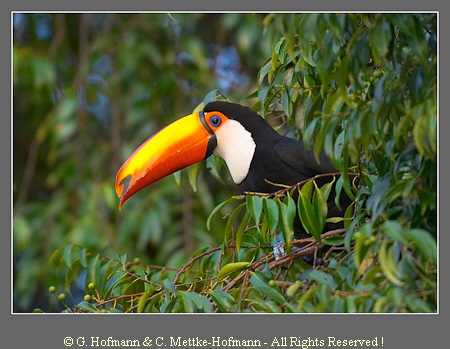
As already mentioned every company offers suitable camera bodies but only the two big players Canon and Nikon offer the bells and whistles which make life easier for bird photographers. It doesn’t matter so much whether your camera has 10, 12 or 14 MP it is way more important how comfortable you feel with the camera. How is the handling, is it easy to grab, does the autofocus do what you want, what about the viewfinder is it bright and big enough? - The list goes on and on. All modern cameras deliver an image-quality which is good enough for cover shots in glossy magazines. It is meanwhile really more important how well the camera body handles???. My favorite cameras are: With Canon the 40D and the rebel XSI, with Nikon the D300 and the D60, the latter ones are the budget models which are less robust, have fewer bells and whistles but nonetheless are a hell lot of camera and image quality is more than enough for our needs.
Sadly we are not done when we go home with our brand new digital camera we still need storage cards which come in different brands, capacities, and formats. Common cards for amateur cameras are the small SD cards and for the more professional cameras the CF cards. I never was a friend of very-large capacity cards let’s say 16GB. Sure they hold a lot of pictures but if they get lost or defect it means also a lot of pictures are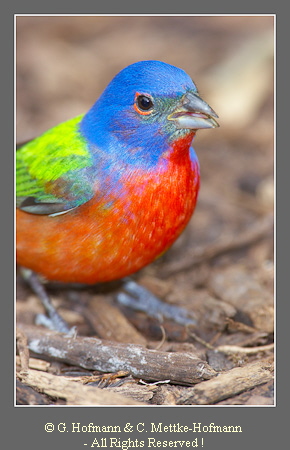 gone. Four GB cards are a pretty good compromise for cameras in the 8-14MP range. They hold enough pictures (about 150-220 RAW pictures and even more if you shoot JPGs) and are currently really cheap. I went with Sandisk and never had a card which failed. Actually one got into the washing machine and I could still retrieve all pictures and another was still in the camera when I dropped it into the Mississippi. The Camera was no longer working, the Flash card did. I am sure other brands like Lexar are as reliable I just would avoid the very cheap cards from unknown sources offered on ebay. gone. Four GB cards are a pretty good compromise for cameras in the 8-14MP range. They hold enough pictures (about 150-220 RAW pictures and even more if you shoot JPGs) and are currently really cheap. I went with Sandisk and never had a card which failed. Actually one got into the washing machine and I could still retrieve all pictures and another was still in the camera when I dropped it into the Mississippi. The Camera was no longer working, the Flash card did. I am sure other brands like Lexar are as reliable I just would avoid the very cheap cards from unknown sources offered on ebay.
How many cards you need depends on how many pictures you shoot and whether you have the possibility to download the pictures to your PC regularly. Long hiking trips or expeditions to remote areas usually don’t allow this comfort; either you bring your own laptop or a portable photo storage device like the JOBO Giga Vu or the Epson Photoviewer. Don’t go the cheap way but choose a storage device with a big enough hard-drive (>80GB). In any case, I strongly recommend backing up the downloaded pictures to regular external hard-drives like the “Western Digital My Passport Essentails” 320GB Version currently runs for around $125. Believe me! Backup is essential. It is not a matter whether your hard-drive in the PC/notebook or portable photo storage device fails, it is a matter of when it will fail – sadly all hard-drives will fail at one point. Call me paranoid but I always backup my pictures twice but coming from an IT background I saw to many disasters.
Let’s come to the lens. Mostly you will buy your camera with a kit lens like a 18-55mm. I strongly recommend choosing a lens with image stabilization (called VR with Nikon). They are a bit more expensive but they will increase the number of sharp pictures you shoot dramatically. Nikon offers an 18-200mm with this technology which is kind of comparable to a Swiss-Army knife; it nearly does everything but isn’t perfect. Zooms with such a huge range are usually no stellar performers at the long end sadly the one we will use most. I would recommend going with the kit lens which is roughly $100 more than the camera alone. If one notices that this is exactly the most used range one still can use for am more expensive high quality lens for this range but for birds we won’t use this range very often. The kit lens usually is a fine lens for the occasional family parties or landscapes it is just not of outstanding quality.

The world looks different when we look at the macro lenses. For the own captive birds the 100mm or 180/200mm often is the best lens to use. Luckily nearly all macro lenses are of high quality and are great performers. You can’t go wrong when you go with a lens of your camera manufacturer, but I would look for a lens with the possibility to instantly 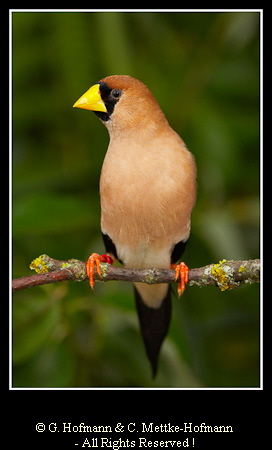 manually override the autofocus without switching back to manual focus. More often than not this is exactly the fraction of a second which makes the difference between getting the shot or capturing an empty perch. Canon calls these lenses USM, Nikon Silent Wave and Sigma HSM. Sigma btw offers bargain 150mm and 180mm macro lenses of very high quality with exactly this technology; they are the only none Canon lenses in my camera bag. Another advantage of the ultrasonic driven autofocus is that they are nearly silent whereas the other technologies create quite a bit of noise which most birds don’t really appreciate. manually override the autofocus without switching back to manual focus. More often than not this is exactly the fraction of a second which makes the difference between getting the shot or capturing an empty perch. Canon calls these lenses USM, Nikon Silent Wave and Sigma HSM. Sigma btw offers bargain 150mm and 180mm macro lenses of very high quality with exactly this technology; they are the only none Canon lenses in my camera bag. Another advantage of the ultrasonic driven autofocus is that they are nearly silent whereas the other technologies create quite a bit of noise which most birds don’t really appreciate.
Of course we also need a long lens. I am a big fan of zoom lenses in the range of 100-400mm (they should have some sort of image stabilization). They are perfect for large aviaries and of course bird parks and zoos but they also do a pretty good job with tamer birds at the feeder or herons, pelicans, etc. I went with the Canon 100-400mm/IS and frankly it is one of my most used lenses. Nikon offers a similar 80-400mm/VR, sadly the AF is not the fastest, Sigma offers a 120-400mm/OS and a 50-500mm/OS but they are just hitting the market so nobody knows how they perform in the long run. An alternative is to go with a 300mm/4.0. Canon and Nikon offer these options. Both are absolutely stellar performers in terms of image-quality even better than the mentioned zooms. Both lenses work perfectly together with dedicated 1.4 time converters which make a 420mm/5.6. Unfortunately, only the Canon lens offers image stabilization and fast ultrasonic AF, whereas the Nikon lens only offers the fast silent-wave autofocus but no stabilization system.
When you are hopelessly infected with the bird-photography virus sooner or later the wish comes to own one of the real big lenses like a 300mm/2.8 or the most favorite lens among many bird-photographers a 500mm/4.0 not to speak of the 600mm/4.0. These are all amazing tools. They all work perfectly together with the dedicated 1.4 and 2.0 converters. But and this is a big but even the smallish 300mm/2.8 costs around $3000 and the 500mm and 600mm are nearly twice as much. And of course you need a solid tripod and tripod head for these monsters which adds another $1000. Working with one of these lenses is a lot of fun but carrying them around isn’t. Already my basic long lens setup is about 10kg add another couple of lenses and a backup camera body and you end up with 20-25kg, at 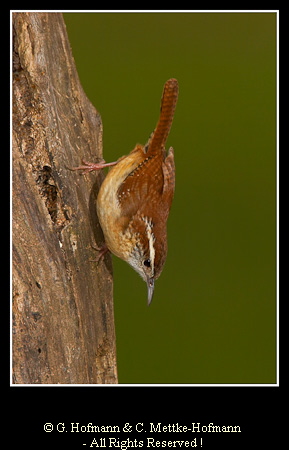 least you don’t need to exercise when you come home from a long hike. least you don’t need to exercise when you come home from a long hike.
I strongly recommend getting a 1.4 times converter; it really doesn’t eat up a lot of space but is one of the most versatile items in your camera bag. Added to your 200 macro you have a 280mm macro, added to the 300mm lens you get a 420mm lens. If I can’t get close enough I sometimes even use it together with my 100-400mm zoom which makes it a 140mm-560mm. However, in this case the AF is no longer working and image quality suffers quite a bit. Kenko, Tamron and Sigma offer relatively cheap alternatives to the one the camera manufacturers offer. In many cases, these original converters only fit to dedicated lenses whereas the Kenkos, Tamrons and Sigmas work together with nearly every lens.
A flash is a “must have” for the photographer working with captive birds, it is the only way you get good colors and sharp pictures in indoor aviaries or cages. If the budget allows it go for the big flash-guns of your camera manufacturer for instance the 580EXII when you work with Canon. They recycle faster, offer the possibility to connect special high-voltage batteries, and they are simply more powerful so you can use slower ASA settings or/and use smaller apertures. If you want to document breeding success of certain birds, nestlings, mouth-markings or even fledglings nothing beats a macro flash like for instance a ring-flash like Canon’s MR 14 EX or the even more versatile Twin flash MT-24EX. Nikon offers a fantastic Macro flash-system: The R-1 wireless closeup Speedlight system is currently state of the art and covers everything but cooking coffee for the photographer.
A tripod is an essential help for nearly all kind of photography and I would invest in a tripod you can use for years to come. If the budget allows it go for a carbon version like the bogen 190CX3 add a good ball-head from Kirk-Enterprise BH-1 and you are set and done. Don’t expect to get a quality tripod or ball-head for cheap; with these items you get what you pay for. The one I mentioned are not cheap but offer a good compromise between costs and quality.
Finally one should have the right software to handle the pictures. Meanwhile I do m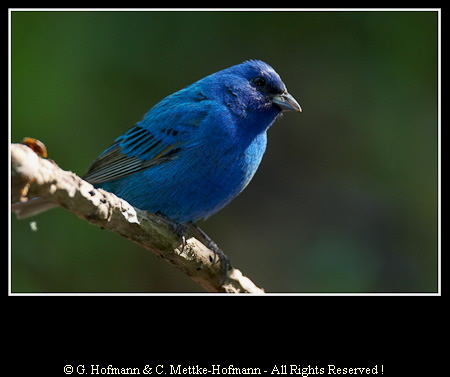 ost of my editing with Adobe Lightroom which handles nearly every kind of picture file and is also a wonderful tool for organizing your pictures. It is certainly worth to download the test version from Adobe’s web-site. All manufacturers bundle their camera with dedicated raw-converter software. They work pretty well and the image quality they deliver is fine but if you compare it to Lightroom ore Phase One, to name another popular software, they are very cumbersome to use. At the end you will need five to ten times longer for the same job as with Lightroom or Phase One enough reason for me to invest in these tools. Whether one really needs Photoshop CS3 or whether Photoshop Elements is enough depends on the user. Elements got pretty good over the years and is fine for all but the toughest tasks. On the other hand if you would like to go professional the standard is still Photoshop CS3 or probably CS4 in the near future. ost of my editing with Adobe Lightroom which handles nearly every kind of picture file and is also a wonderful tool for organizing your pictures. It is certainly worth to download the test version from Adobe’s web-site. All manufacturers bundle their camera with dedicated raw-converter software. They work pretty well and the image quality they deliver is fine but if you compare it to Lightroom ore Phase One, to name another popular software, they are very cumbersome to use. At the end you will need five to ten times longer for the same job as with Lightroom or Phase One enough reason for me to invest in these tools. Whether one really needs Photoshop CS3 or whether Photoshop Elements is enough depends on the user. Elements got pretty good over the years and is fine for all but the toughest tasks. On the other hand if you would like to go professional the standard is still Photoshop CS3 or probably CS4 in the near future.
It is easy to spend thousands of dollars with this hobby and to forget the main thing namely taking pictures. Good places to start are the own backyard. Set up a feeder where you have sufficient light from the right direction, watch the background so you don’t catch the neighbors fence or power lines. A couple of nice perches attached to the feeder or the pole and you are ready to go.

If you construct a new cage or indoor aviary plan for additional openings for flash and lens. Moth flash can be triggered wireless so you can even leave them in place. An empty beverage can is the perfect dummy for the lens so the birds get used to this shiny long object.
There are tons of possibilities to document our lovely birds, I wish you good luck with your new hobby and if you need any help don’t hesitate to shoot me an e-mail at Gerhard@hofmann-photography.de.
|
|